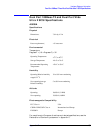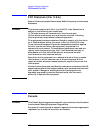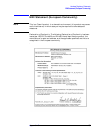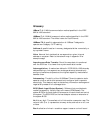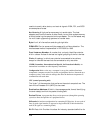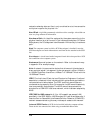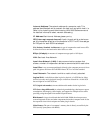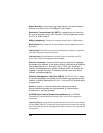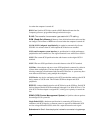
117
Packet: A sequence of binary digits that is transmitted as a unit in a
computer network. A packet usually contains control information plus
data.
Parity Checking A way to verify the accuracy of data transmitted over the SCSI
bus. One bit in the transfer is used to make the sum of all the 1 bits either odd or
even (for odd or even parity). If the sum is not correct, an error message appears.
SCSI uses odd parity.
PCI: Peripheral component interconnect. A local bus specification that
allows connection of integrated peripheral controller components,
peripheral add-in boards, and processor/memory systems. It bypasses
the slower ISA and EISA busses.
Peripheral Devices A hardware device (such as a video monitor, disk drive,
printer, or CD-ROM) used with a computer and under the computer’s control. SCSI
peripherals are controlled through a SCSI host adapter.
Pin-1 Orientation The alignment of pin 1 on a SCSI cable connector and the pin 1
position on the SCSI connector into which it is inserted. External SCSI cables are
keyed to ensure proper alignment, but internal SCSI ribbon cables may not be.
PIO (programmed input/output) A way the CPU can transfer data to and from
memory via the computer’s I/O ports. PIO can be faster than DMA, but requires
CPU time.
Port Address Also Port Number. The address through which commands are sent
to a host adapter board. This address is assigned by the PCI bus.
Port Number See Port Address.
PPA: Physical point of attachment.
Protocol: A specification for coding messages exchanged between two
communications processes.
Queue Tags A way to keep track of multiple commands while allowing increased
throughput on the SCSI bus.
RAM (Random Access Memory) Generally, the computer’s primary working
memory in which program instructions and data are stored and are accessible to the
CPU. Information can be written to and read from RAM. The contents of RAM are



